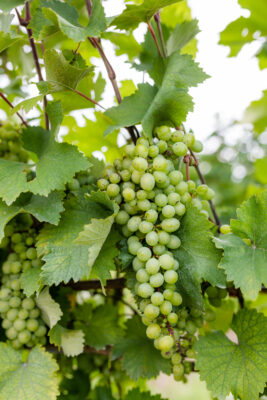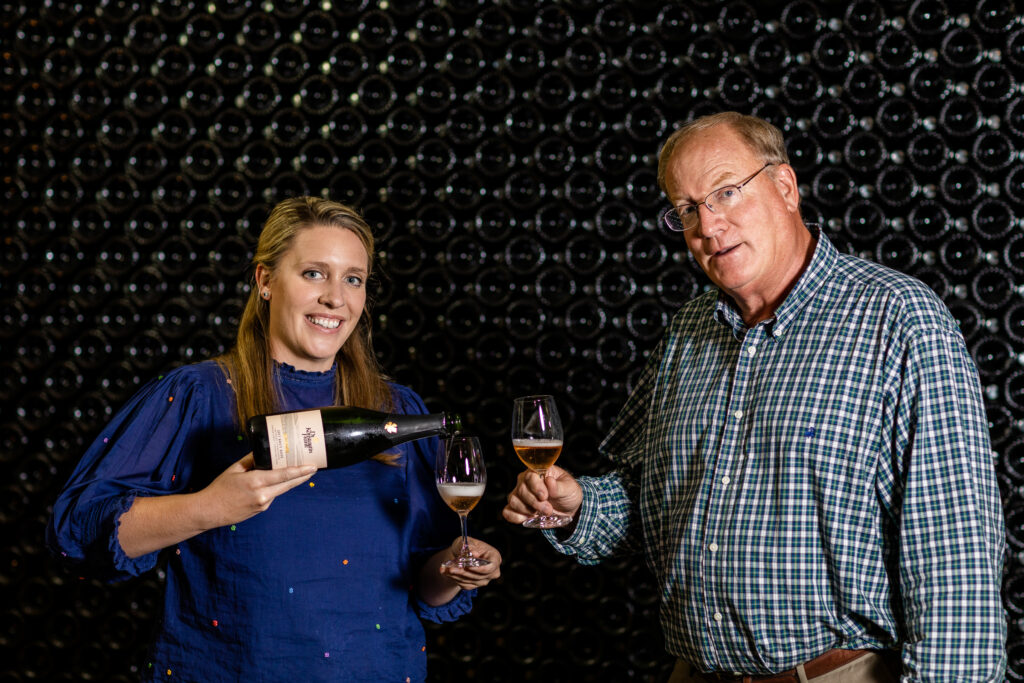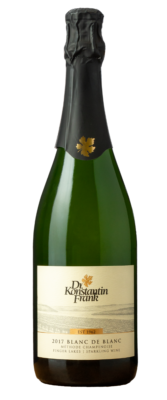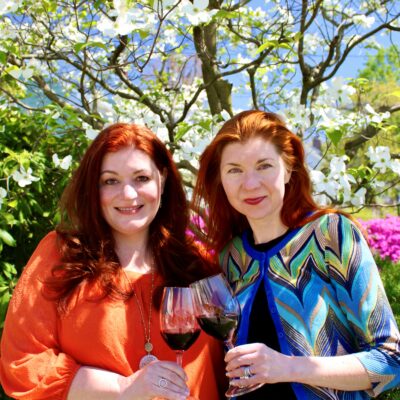The early history of vinifera grape growing in the colder climates on the East Coast goes something like this: Vinifera was planted. It died. Grape growers and winemakers gave up and chose to use native grapes for wine, eventually turning to hybrid grapes, too.
That’s an overly simplified version of how it unfolded, but for the most part, people believed growing vinifera in the cold and wet climate of the East Coast couldn’t be done. But, Dr. Konstanin Frank knew differently. In the 1930s, he grew vinifera in the cold climate of Odessa, Ukraine. There, he was instrumental in helping the region rebuild after phylloxera decimated the vines, grafting vinifera vines onto rootstock that could handle the pests.

When he came to the United States in the 1950s, he found a wine industry in New York that embraced hybrids, but not vinifera. Dr. Frank was certain that if he took the rootstock from wild vines in the U.S. and grafted vinifera vines onto them, he could successfully grow European grapes. He was right.
“In our vineyards and others now, right above the soil you’ll see a bulge on the trunk,” says Dr. Frank’s grandson Fred Frank, president of Dr. Konstantin Frank Winery. “Below the bulge, everything is from the wild vines. Everything above the bulge is European stock.” That bulge is where the two different plants were grafted together. That bulge changed the history of East Coast wine.
Dr. Frank formed a group he called the Cooperators. He shared his knowledge and his grafted vines with East Coast wine pioneers like Doug Morehead of Presque Isle Wine Cellars in Western Pennsylvania and Elizabeth Furness of Piedmont Vineyards in Virginia. Fred recalls meeting about a dozen of these winemakers as a child. He also recalls his grandfather’s efforts to raise the awareness of wine drinkers.
“He started the American Wine Society in 1967 to educate consumers about wine appreciation, particularly vinifera,” says Fred.
Adding Sparkling Wine to Dr. Konstantin Frank Winery’s Legacy
One thing Dr. Frank did not do? Make sparkling wine.
“He actually sort of poo pooed sparkling. He was quoted as saying the only reason the French make sparkling wine in Champagne is because they could never make a decent table wine that far in Northern France,” says Fred.
When Dr. Frank’s son Willie Frank joined the family winery, he wanted to build on the 100-year tradition of making sparkling wine in New York. Rather than make them from native or hybrid grapes, he wanted to make premium sparkling in the traditional Champagne method from traditional Champagne grapes: Pinot Noir, Pinot Meunier and Chardonnay.
In 1979, he purchased the Western New York Wine Company, which was right next door to Dr. Frank’s winery. Built in 1886, it had a deep, cool, dark cellar, perfect for aging sparkling wine. Willie’s first sparkling vintage was 1985.
“Willie’s theory was that the cool climate in the Finger Lakes was the closest in the United States to the French Champagne region,” says Fred.
Dr. Frank’s son’s instincts were right.
“He began making these sparkling wines that created rave reviews year after year,” says Fred.
This year, as the winery celebrates its 60th anniversary, their sparkling wine got another rave review. Judges awarded the Dr. Konstantin Frank 2017 Blanc De Blanc the Best Sparkling Wine at the 2022 New York Wine Classic. Crafted by winemaker Eric Bauman along with Barbara Frank, who consults for the winery’s sparkling wine program, it’s one of several sparkling wines the winery produces.
Because of Willie’s push to make premium Finger Lakes sparkling wine, there are now other wineries in the region that can also compete in the category.
A Ground Swell of Premium Sparkling in the Finger Lakes
“Slowly but surely other Finger Lakes vintners began to take notice of what Willie was doing,” says Fred. “Today, a number of premium Finger Lakes wineries are either beginning or continuing premium sparkling wine programs.”
He acknowledges that because there is a lot of specialized equipment needed to produce premium sparkling wine, the emergence of the category is slow going. But he believes Champagne-style bubbles will be the “next big buzz” for the Finger Lakes, following the path that Riesling took in the region over the past few decades.

“We know the quality is there. We’re getting high ratings for our sparklers. Many wine writers are amazed at the similarities in the flavor profile and style of the wines compared to French Champagnes,” says Fred.
He knows it’s going to take more time and more wineries producing premium sparkling for the region to become well-known for its bubbles.
“One man, one winery cannot make a varietal buzz for a region. You need a number of premium wineries. That happened three or four decades after Konstantin, a number of quality vintners began making Riesling and also winning awards. That created this quality image of Finger Lakes Riesling,” says Fred. He now sees the same type of ground swell with premium sparkling wines in the Finger Lakes that previously happened with Riesling.
Dr. Konstantin Frank Winery is leading that path toward world-class Methode Champenoise wine with their award winning Blanc de Blanc.
“We’re very pleased to win this prestigious award,” Fred says. “We’re proud of the team effort with our vineyard managers, our winemakers, and our management. And, we really appreciate what New York Wine & Grape Foundation does to promote New York Wines.”

Dr. Konstantin Frank 2017 Blanc De Blanc
- Variety: 100% Chardonnay.
- Vinification: Whole Cluster Direct Press.
- Vessel: Stainless Steel. Temperature Controlled.
- Fermentation: Only Cuvée Press Used. 5% Barrel Fermented.
- Élevage: Méthode Champenoise. 36 Months Minimum.
- Dryness: Dry. 0.8% Residual Sugar.
- Analysis: 12% Alc, 8.62 g/L TA, 8 g/L RS, 3.05 pH.
- Production: 363 Cases.
Winemaker Notes: Characters of fresh pastry dough, Bartlet pear, lemon curd, and minerality. The crisp acidity and subtle mineral undertones give the wine great structure and elegance. Leading with a fine mousse, the mouthfeel is creamy and profound. Long crisp apple finish.

About the New York Wine Classic
Organized annually by the New York Wine & Grape Foundation, the New York Wine Classic celebrates a diverse selection of world-class wines from producers within the State. Judging for this year’s competition took place from April 15th – June 15th, 2022 and included 694 entries from 101 wineries from across the state. A total of 7 Platinum, 234 Gold, 324 Silver, and 110 Bronze medals were awarded.

